Successful press kits not only deliver timely information to editors but they also make you look and sound credible. Editors can’t risk their reputation on questionable information or sources, so make sure your message is clear and your brand represented.
To create a great press kit you must:
- Have something newsworthy
- Understand your target editors/writers
- Write and design your kit to those editors/writers while supporting your brand
This article focuses on writing and designing a winning kit.
Good Creative Supports Your Goal.
Great press kits go beyond photocopied releases in plain manilla envelopes. They can include digital media and be delivered electronically. They can also include samples or giveaways. Many are downright wacky and fun. But it is a fine line between enough and overkill. Highly innovative and gimmicky press kits may be the in-thing for movie launches and fashion shows, but they could fall flat without the substance to back them up or when editors are focused on widgets or financial services. Be sure your kit is designed appropriately for your niche. If your story requires bells and whistles, by all means, make some noise. Just make sure your kit doesn’t upstage your news. Pay special attention to:
- Grammar and spelling. Poor grammar and spelling make you look careless and untrustworthy, not to mention a little dim. And for heaven’s sake, don’t rely on spell check. Remember, editors and writers care about dotting i’s and crossing t’s.
- Kit design. Don’t undermine your brand by tossing simple press releases in a blank folder and calling it a kit. A strong brand that’s consistent within the press kit wins points with editors looking for the next great thing from a credible source.
- File formats. Make sure your photos are high resolution. It also doesn’t hurt to include both RGB and CMYK since most publications have online components.
Creating a great kit improves your chances of becoming tomorrow’s news.
Getting Front Page Placement.
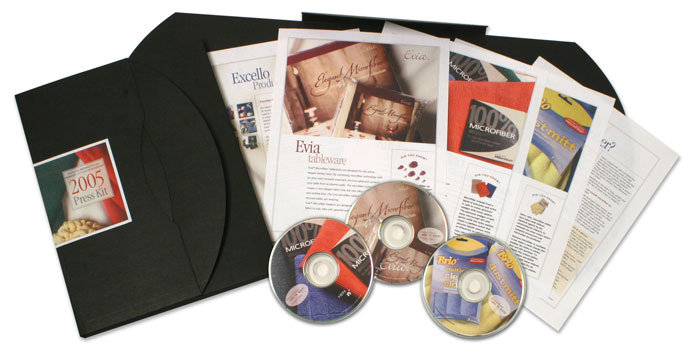
Here’s an example of a press kit that won prime placement on opening day of the annual International Housewares trade show in Chicago—exactly the right day of the year! Although this is example from a very specific niche, the same principles apply no matter what business you’re in.
Out of the thousands of new products introduced at the show, this client’s innovative and elegantly simple table cloths were included in the Chicago Tribune’s list of top 14 innovative products—with photo and above the fold—on the front page of the Home & Garden section of the Sunday edition.
How Was This Accomplished?
Nailing prime placement in key publications is never a sure thing, but it’s more likely with a combination of a great product or service, a great story and a well-done press kit.
What to Include.
Start by using product storytelling, well-written press releases and, if applicable, demonstration videos. You can also use an unusual container format to make the kit feel special. In this example, we used sleek black portfolio boxes to grab attention. It’s okay to stand out from the plain envelopes and folders gathering dust in the editor’s in-box.
Included within the kit were:
- A press release
- Company backgrounder
- Product glossy (written and designed specifically for editors and writers)
- A CD-ROM containing high-resolution photos, digital copies of the releases and a video demonstration showing how the fabric table cloths protected against spills
You can also consider including product or service fact sheets, a short list of frequently asked questions, brief and succinct testimonials and samples in your press kit. If you’re going to include any kind of glossy product info in the kit, make sure it’s targeted to the media. Do not include catalogs and sell sheets as they contain too much hyperbole and may turn off editors. Remember, keep the kit brief and valuable.
Distribution and Follow Up.
Don’t rely on a single method of distribution. This particular press kit was distributed to media giants at the Houseware’s Show Media Event in New York three months prior to the show as well as mailed to editors who did not attend. Standards today also include posting your kit’s components in the media section of your website or blog. Follow up all distributions with a phone call. No hard sell—be helpful and find out if they need or want more information.
Make sure your staff is ready for follow up and does so quickly. The Tribune requested product samples as a result of this press kit, and they were sent overnight. If your product is making specific and demonstrable claims, be prepared to have editors test the product and grill you for more information.
And smile when you’re talking with an editor or writer on the phone, they can hear that.
— by Julia Moran Martz
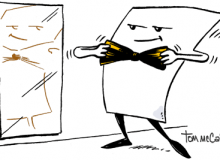
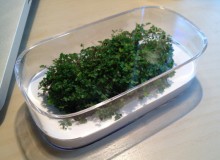
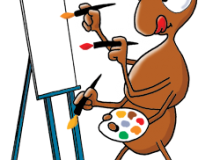
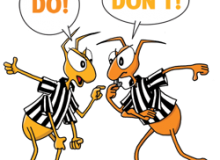
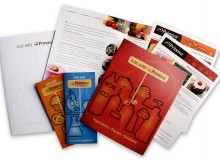
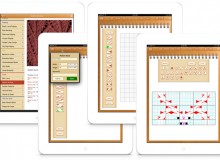
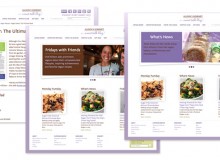
Websites tagged "grammar" on Postsaver
[…] – How to Create a Winning Press Kit? saved by edithacker2009-02-02 – […]